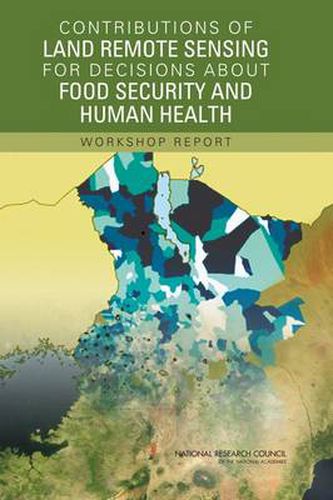Readings Newsletter
Become a Readings Member to make your shopping experience even easier.
Sign in or sign up for free!
You’re not far away from qualifying for FREE standard shipping within Australia
You’ve qualified for FREE standard shipping within Australia
The cart is loading…






Land remote sensing: the use of space-based satellite technologies to obtain information on environmental variables such as land-use and land-covering combination with other types of data can provide information on changes in the Earth’s surface and atmosphere that are critical for forecasting and responding to human welfare issues, such as disease outbreaks, food shortages, and floods.
This book summarizes a workshop on the potential contributions of remotely sensed data to land-use and land-cover change and ways to use physical, biological, temporal, and social characteristics of particular locations to support decisions about human welfare. The discussions focused on human health and food security, two aspects of human welfare in which remotely-sensed environmental conditions play a key role. Examples illustrating the possibilities for applying remote sensing for societal benefit are included throughout the report. As a result of the workshop, three themes were identified that, if fostered, could help realize the potential for the application of land remote sensing to decisions about human welfare: (1) integration of spatial data on environmental conditions derived from remote sensing with socioeconomic data; (2) communication between remote sensing scientists and decision makers to determine effective use of land remote sensing data for human welfare issues; and (3) acquisition and access to long-term environmental data and development of capacity to interpret these data.
$9.00 standard shipping within Australia
FREE standard shipping within Australia for orders over $100.00
Express & International shipping calculated at checkout
Land remote sensing: the use of space-based satellite technologies to obtain information on environmental variables such as land-use and land-covering combination with other types of data can provide information on changes in the Earth’s surface and atmosphere that are critical for forecasting and responding to human welfare issues, such as disease outbreaks, food shortages, and floods.
This book summarizes a workshop on the potential contributions of remotely sensed data to land-use and land-cover change and ways to use physical, biological, temporal, and social characteristics of particular locations to support decisions about human welfare. The discussions focused on human health and food security, two aspects of human welfare in which remotely-sensed environmental conditions play a key role. Examples illustrating the possibilities for applying remote sensing for societal benefit are included throughout the report. As a result of the workshop, three themes were identified that, if fostered, could help realize the potential for the application of land remote sensing to decisions about human welfare: (1) integration of spatial data on environmental conditions derived from remote sensing with socioeconomic data; (2) communication between remote sensing scientists and decision makers to determine effective use of land remote sensing data for human welfare issues; and (3) acquisition and access to long-term environmental data and development of capacity to interpret these data.